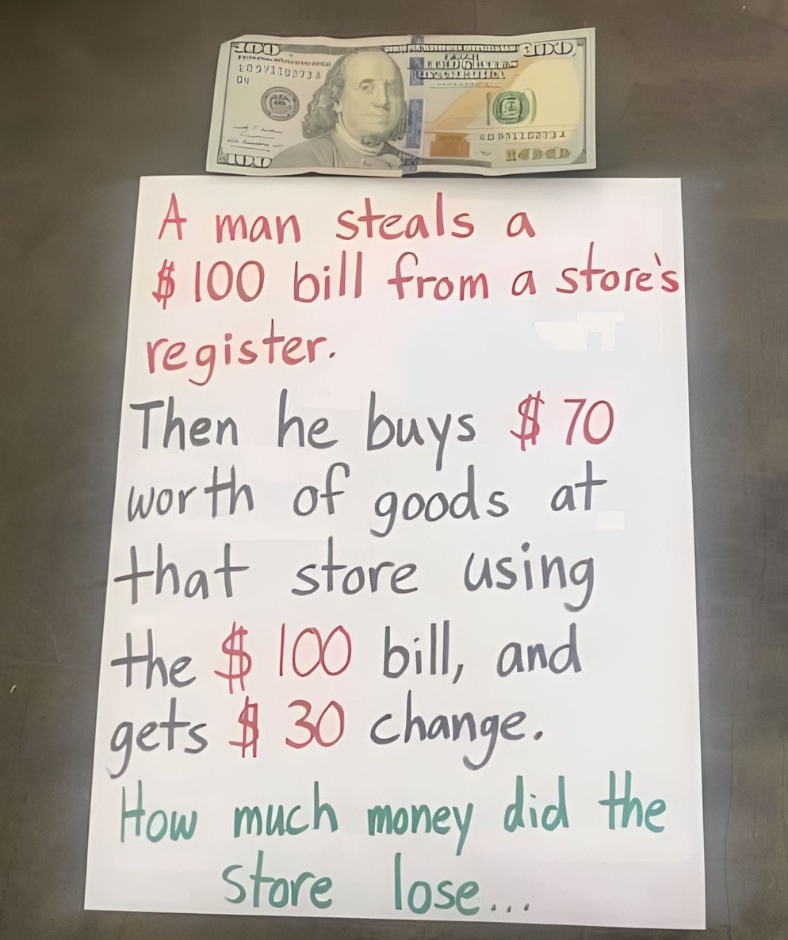
A brain teaser has recently taken social media by storm, challenging users to determine the actual financial loss a store incurs in a seemingly straightforward scenario. Originally shared by the X account (formerly Twitter) “Out of Context Human Race,” this puzzle has sparked widespread debate and garnered over 50 million views. The conundrum involves a stolen $100 bill and subsequent transactions, leading to various interpretations and conclusions. Let’s dissect the situation meticulously to uncover the correct answer.
The Scenario
Imagine a man enters a store and steals a $100 bill from the cash register. Later, he returns to the same store and uses that stolen $100 bill to purchase $70 worth of merchandise. After the transaction, he receives $30 in change. The pressing question is: What is the total financial loss suffered by the store?
Analyzing the Transactions
To determine the store’s loss, we must examine each step of the scenario:
-
Theft of $100: The initial act of stealing $100 from the register results in an immediate cash loss of $100 for the store.
-
Purchase of Goods: The thief returns and uses the stolen $100 to buy $70 worth of goods. At this point, the store regains the $100 in cash but parts with $70 in inventory.
-
Issuance of Change: After the purchase, the store provides $30 in cash as change to the thief.
Calculating the Total Loss
To ascertain the total loss, we need to consider both the inventory and cash flow:
-
Inventory Loss: The store has relinquished $70 worth of merchandise.
-
Cash Loss: The store has given $30 in cash as change.
Adding these amounts together, the store’s total loss amounts to $100.
Clarifying Common Misconceptions
Several interpretations have emerged regarding this puzzle:
-
$100 Loss Perspective: This viewpoint asserts that the store’s loss comprises $70 in goods and $30 in cash, totaling $100. The stolen $100 bill, having been returned during the purchase, effectively negates the initial cash loss.
-
$130 Loss Perspective: Some argue that the store loses $100 from the theft and an additional $30 in change, culminating in a $130 loss. However, this interpretation overlooks the fact that the stolen $100 bill was used for the purchase, thereby returning to the store’s register.
Conclusion
After a thorough analysis, it becomes evident that the store’s actual loss is $100, derived from $70 worth of goods and $30 in cash change. This brain teaser underscores the importance of scrutinizing each component of a scenario to arrive at an accurate conclusion. Engaging with such puzzles not only sharpens critical thinking skills but also highlights the nuances of financial transactions and loss assessment.





